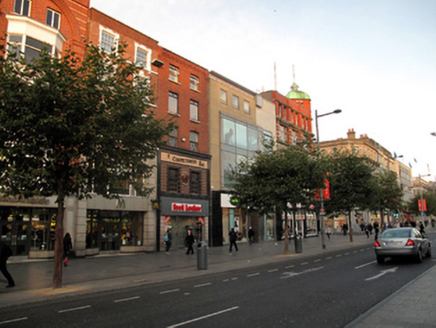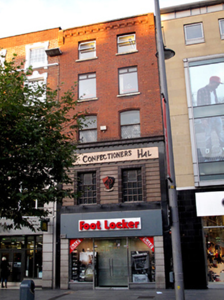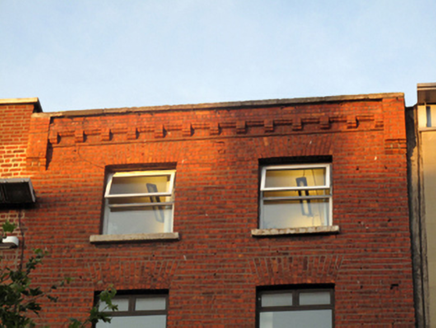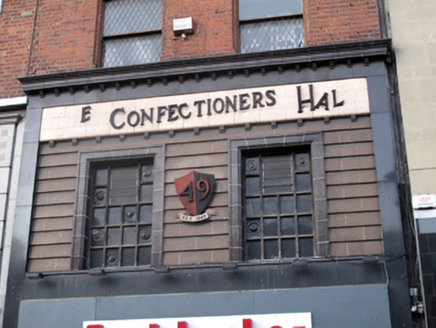Survey Data
Reg No
50010506
Rating
Regional
Categories of Special Interest
Architectural, Artistic, Cultural
Original Use
House
In Use As
Shop/retail outlet
Date
1890 - 1910
Coordinates
315932, 234469
Date Recorded
19/10/2011
Date Updated
--/--/--
Description
Terraced two-bay five-storey house, built c.1900, having recent shopfront to ground floor and single-storey extension to rear. Now in use as retail premises. M-profile pitched slate roof having mixed replacement and cast-iron rainwater goods, concealed behind red brick parapet wall with ashlar granite coping. Red brick corbel table to eaves flanked by red brick consoles. Flemish bond red brick walls to upper floors and brown brick to rear, with rendered walls to extension. Tiled façade to first floor of front elevation having tiled engaged pilasters, plinth course and platband with dentillated cornice over tiled dentillated fascia having applied lettering. Metal shield between windows with house number and establishment date. Square-headed window openings with gauged brick voussoirs to third and fourth floor openings having masonry sills and replacement uPVC windows. Segmental-headed window openings with gauged brick voussoirs to second floor with chamfered surrounds and replacement single-pane timber sliding sash windows. Square-headed window openings to first floor of front elevation having moulded tiled architrave surrounds, reveals and timber-framed windows. Square-headed window openings to rear elevation having gauged brick voussoirs, masonry sills and replacement uPVC windows.
Appraisal
The Confectioners Hall was opened on this site in 1842 by Graham Lemon and Company and, on the evidence of contemporary photography, survived the 1916 Easter Rising largely unscathed. The façade is distinguished by the Classically-detailed double-height shopfront with cream- and chocolate-coloured tiles and stylish lettering. Lemon and Company makes an appearance as "Graham Lemons" in the Lestrygonians Episode of "Ulysses" (1922) by James Joyce (1882-1941).







